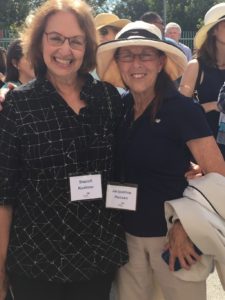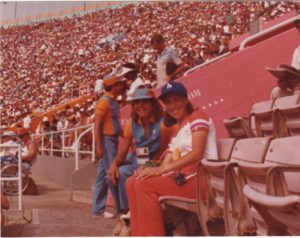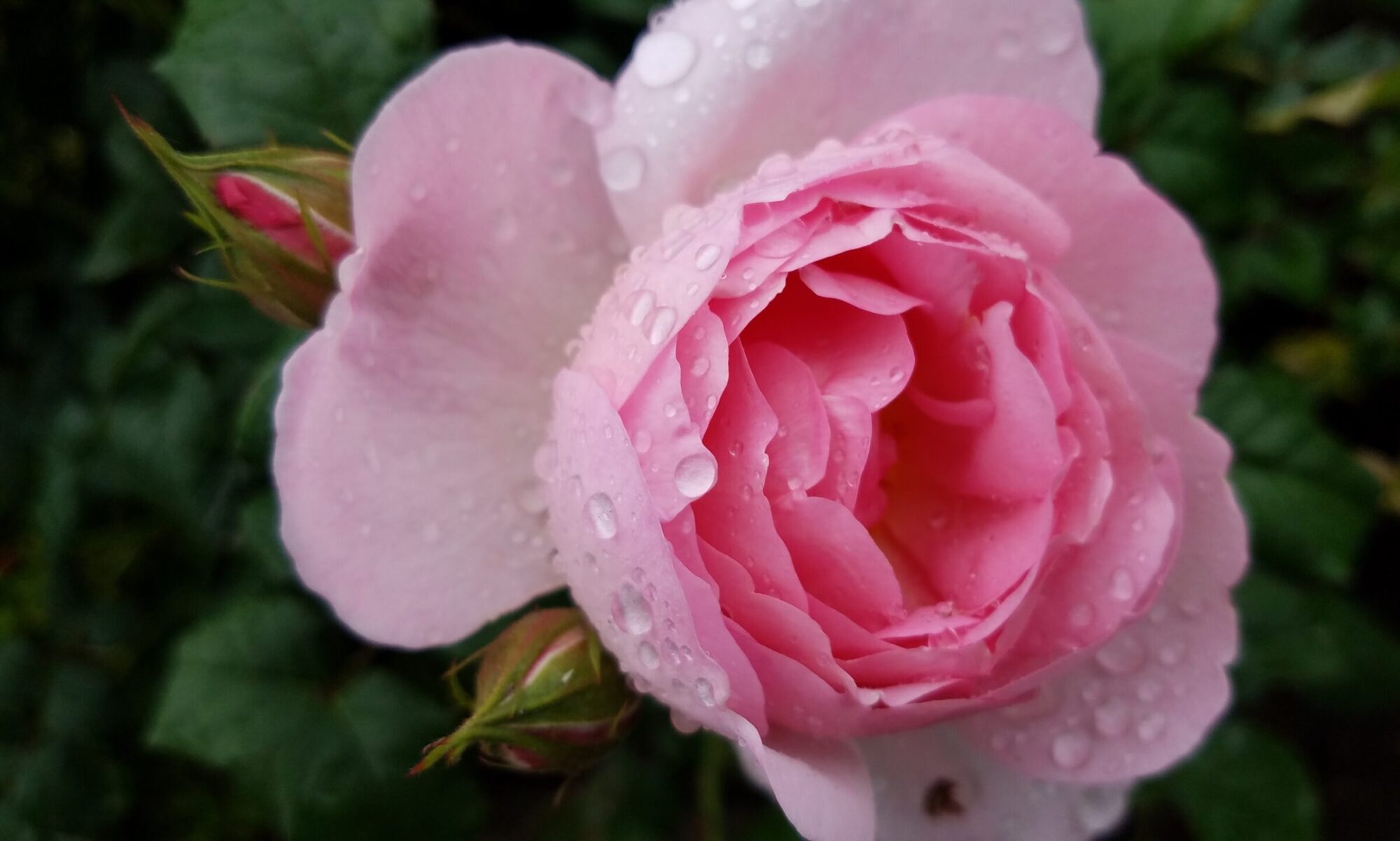
 Happy and healthy New Year greetings! It’s definitely a time for reflection, not just for the past year, plenty eventful enough, but also for looking at events over a lifetime. Perhaps it was the recent fire evacuations that prompted me to pursue my ongoing project to digitize all my photos, but now I’m full speed on that project as we speak. I live in a fire risk area and I have evacuated just a few times, yet packed more than a few times, so I am always prepared with boxes in order of priority, ready to go just in case. However, there is something different about this year’s fires. They come fast, burn with more fury, are more lethal, and take a bigger toll. I’m also not getting any younger, don’t move as quickly, and could never carry all those boxes even if time permitted. Photos are most of the memorabilia I would like to save, given the option. I have a few friends who weren’t so fortunate as I was to return to my house still standing intact. I am grateful, and I am more cautious in all matters.
Happy and healthy New Year greetings! It’s definitely a time for reflection, not just for the past year, plenty eventful enough, but also for looking at events over a lifetime. Perhaps it was the recent fire evacuations that prompted me to pursue my ongoing project to digitize all my photos, but now I’m full speed on that project as we speak. I live in a fire risk area and I have evacuated just a few times, yet packed more than a few times, so I am always prepared with boxes in order of priority, ready to go just in case. However, there is something different about this year’s fires. They come fast, burn with more fury, are more lethal, and take a bigger toll. I’m also not getting any younger, don’t move as quickly, and could never carry all those boxes even if time permitted. Photos are most of the memorabilia I would like to save, given the option. I have a few friends who weren’t so fortunate as I was to return to my house still standing intact. I am grateful, and I am more cautious in all matters.
Here, I am sharing a bunch of photographs (homegrown and not the finest quality) which represent how that golden day in 1984 unfolded when the world’s finest women marathoners gathered for the first Women’s Olympic Marathon in history. Here is both the link to a photo album and an excerpt from my book to describe the details.
Photo Album: Women’s Olympic Marathon 1984
Excerpt from A Long Time Coming, Chapter 25,
“A Golden Day in L.A.”Your living is determined not so much by what life
brings to you as by the attitude you bring to life; not so
much by what happens to you as by the way your mind
looks at what happens.
Kahlil Gibran
Between the Marathon Trials and the Olympic Games, I
was honored by the ACLU at an awards ceremony
celebrating “Champions of Justice” at the ACLU’s 25th
Annual Garden Party, at the home of Betty and Stanley
Sheinbaum. Tributes were paid to “stars in their
respective athletic fields as well as individuals who
have furthered the cause of civil liberties,” said Ramona
Ripston, ACLU executive director. “Their experiences
on and off the playing field have led to advancing
equality through the examples they have set and the
challenges to fundamental rights they have faced.”
Athletes honored included Rafer Johnson, Harry
Edwards, John Carlos, and Mac Robinson. Mayor Tom
Bradley was our “special guest speaker.”
I loved that my friend Sherrill Kushner, a lawyer,
placed an ad in the program for the event quoting Pierre
de Coubertin, who said in 1912, “We feel that the
Olympics must be reserved for men… and female
applause as its reward.” Sherrill’s response: “Eat your
heart out, Pierre!”
Had the International Runners Committee/American
Civil Liberties Union lawsuit for the women’s 5000 and
10,000 been successful and led to the inclusion of these
events in the 1984 Olympic Games, the makeup and
perhaps the outcome of not only the U.S. Olympic
Trials Marathon might have changed entirely, but also
perhaps the selection of women’s Olympic Marathon
teams would have been affected worldwide.
Many women, including myself, were deeply
disappointed by the absence of the 5000 and 10,000 in
the Olympic Games. Certainly, the significance of the
marathon’s inclusion should not be overlooked. But it
was ironic that, in a year when there was a distance as
long as the marathon, there were no other options for
women distance runners.
Lorraine Moller won the 1984 Boston Marathon to
ensure a spot on the New Zealand Olympic Marathon
team. But her friend and countrywoman Allison Roe,
unable to finish Boston, would not be going to Los
Angeles. Several other world-class runners would not
find a spot on the New Zealand team, either. As Moller
put it, “There are not enough races to go around.”


I was delighted to host Joan Benoit in Santa Monica
for the duration of her Los Angeles stay. Sherrill
Kushner lived in my neighborhood and generously
offered up her guesthouse for Joan’s privacy and
solitude in preparation for her race. At the time, Tom,
Michael and I were living in an apartment in Santa
Monica rather than Topanga.
My place offered just two bedrooms in a small
space on a busy street, with a four-year-old child and a
night owl for a husband. Joanie was better off at
Sherrill’s more spacious home, several blocks away,
with accessibility to the favorable running routes on
San Vicente Boulevard and Santa Monica beaches.
In fact, Tom and I had lots of friends who willingly
offered their homes in Santa Monica to visiting
Olympians. Especially our marathoner friends were
grateful to be housed away from University of Southern
California athletes’ housing for far better training sites
near the beach. I remember Australian Rob De Castella
bringing an entire entourage along with him, including
his family and a massage therapist.
On the day I settled Joanie in Sherrill’s house, I
kept an appointment with my long-time friend and
everyone’s favorite foot doctor, John Pagliano. I was
nursing another stress fracture. U.S. Olympic
marathoner Julie Isphording went along with me, I
suppose for a second opinion about her own ailments.
This was not a good sign. (Sadly, the injury would not
allow Julie to finish the Olympic race.)
In the days surrounding the Games, I spent a lot of
time pool-running and participating in so many aqua
aerobics classes that Lynda Huey, creator of “Water
Power Workout,” made me her first instructor (which I
continued to teach for decades afterward). As well, I
was still plagued with chronic sinusitis, and was
undergoing allergy tests and shots in an attempt to
return to normalcy now that we had returned to Los
Angeles for good, to my great relief. Then there were
Olympic Committee meetings and trainings for
volunteers and employees.
Both Tom and I played roles in the L.A. Olympic
Organizing Committee. Tom was the co-director, with
John Brennand, of the men’s and women’s marathons.
I had only a minor part in the staging of the race – a
volunteer role that kept me close to the women runners
at all times, but out of the public eye and off any list of
names in print.
I was certainly blacklisted by the LAOOC for
bringing the lawsuit. One day, I got on an elevator in
the LAOOC building where Tom worked, and H.D. Thoreau, head of the Olympic track and field program
for 1984, spoke disparagingly of me to his colleague in
a whisper loud enough for me to hear. Yes, I was
blacklisted and knew it.
In fact, once the president of the LAOOC, Peter
Ueberroth, discovered that Tom was my husband, he
fired Tom. At least he tried. The marathon race
committee, under co-director John Brennand’s lead,
refused to move forward without Tom, and they
prevailed (unbeknownst to Ueberroth).
As a volunteer, I was able to view nearly all of the
track and field events at the Coliseum. We chose to
attend the final dress rehearsal of the opening
ceremonies, for the highlights without all the crowds
and traffic.
The day before the women’s marathon, I delivered
Joan Benoit’s and Julie Brown’s water bottles for
placement along the course, obtained maps of the
course (for their friends and family) and picked up
tickets for the start at Santa Monica College. I recorded
in my running log, “Is this really the Olympic Women’s
Marathon?!” I was elated to be there, in any capacity.
Here is what I wrote afterward:
First Women’s Olympic Marathon. My day began
early as a volunteer on the “Start Committee.” It was
arranged that Sherrill would deliver Joanie and that
Glen (a friend) would deliver Michael at the start of the women’s
race. We’d leave for the Coliseum after, or should I say
the rest of us would follow Joan? Glen and Sherrill had
tickets, thanks to Joan, and Michael and I got ours
weeks ago.

Once at the Coliseum, my usher was a woman
runner/friend, so we shared better seats available
trackside for the spectacular finish. Michael was frighterned at the hysteria that broke out in the crowd at Joan’s entrance – which I explained to Michael was
“happy crying.”
But ultimately he was proud of “his friend Joanie.” What an inspiration she was that day!
From the finish line, through dinner at The Chronicle
restaurant in Santa Monica, she never stopped smiling.
Her/my dream come true had a joyous ending
shared by both of us.
As I watched this dream unfold
that day, it occurred to me that young girls all over the
world were watching Joan Benoit on television,
winning the Olympic Marathon, knowing they too
could grow up to be Olympic champions if they
wanted. They could dream of being presidential
candidates and astronauts, too. It was an exciting time
to be a woman!
Please feel free to comment about where you were if you watched the golden moment of the women’s Olympic Marathon in 1984.

I was hosting former Olympian Patty van Wolvelaere and her husband Bob at my place during the games. The morning have a women’s marathon, @LeslieKaminoff and I walked one block north of my Santa Monica house to Wilshire Blvd to watch Joan run down the incline to the beach, about 2 miles to the west. After we saw the first fifty women go by, we got into the car and drove over to the Coliseum to watch her finish in person. When she ran by us on the track, she had about 250 m still to go for finishing that first-ever Olympic women’s Marathon! A bit later, we saw Greta come through the tunnel. We had seen Greta win the year before in Helsinki. We knew Jacqueline was helping with water rehab for Joan. It was all so thrilling!